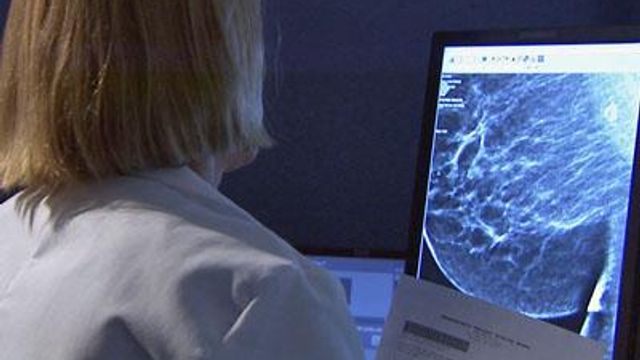Early screenings, new treatments help women survive breast cancer
Breast cancer survival rates are increasing, thanks to more awareness and advances in treatment, and doctors say the key is arming women with more information about the disease.
Posted — UpdatedMonica Cooper got a clean bill of health from her first mammogram at age 41, a year after the recommended start for annual screening. She then skipped a year but did a self-exam last March.
"I happened to find a lump and went to my doctor – my regular primary care doctor – and she said, 'Yes, something is definitely there.' The fear just, it just took me for a loop," Cooper said.
Cooper is an example of a trend of younger women being diagnosed with breast cancer.
Two years ago, the U.S. Preventative Health Services Task Force recommended changing screening guidelines to start biennial screening at age 50, similar to European guidelines.
However, 25 percent of women diagnosed with breast cancer are younger than 50.
"These women would be missed; in particular, early cancers that are not palpable would be missed, if we waited," said Dr. Lisa Tolnitch, a breast cancer surgeon with Duke Raleigh Hospital.
An improving survival rate in the U.S. is due to more younger women getting screened, leading to earlier detection, said Tolnitch and Dr. Michael Spiritos, an oncologist with Duke University Medical Center.
In the past 10 years, doctors have been able to offer more targeted treatments for different types of breast tumors.
"There are many subtypes of breast cancer, and I think we're making great strides in some of these subtypes," Spiritos said.
Cooper had special drugs to treat her estrogen-positive tumor, then a lumpectomy. She's now cancer free.
"I never questioned God about it, and because of my faith in God, that's why I truly believe that I am healed today," Cooper said.
Tolnitch said she's looking forward new screening tools, particularly one called tomography. It converts a mammogram into a 3D image, improving doctors' ability to spot tumors. Contrast Enhanced Mammography uses contrast dye to make small tumors more visible, but the method isn't yet approved by the U.S. Food and Drug Administration.
• Credits
Copyright 2024 by Capitol Broadcasting Company. All rights reserved. This material may not be published, broadcast, rewritten or redistributed.






